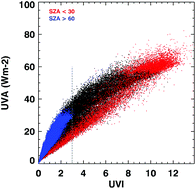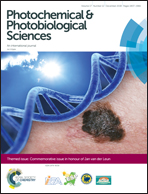Are current guidelines for sun protection optimal for health? Exploring the evidence†
Abstract
Exposure of the skin to ultraviolet (UV) radiation is the main risk factor for skin cancer, and a major source of vitamin D, in many regions of the world. Sun protection messages to minimize skin cancer risks but avoid vitamin D deficiency are challenging, partly because levels of UV radiation vary by location, season, time of day, and atmospheric conditions. The UV Index provides information on levels of UV radiation and is a cornerstone of sun protection guidelines. Current guidelines from the World Health Organization are that sun protection is required only when the UV Index is 3 or greater. This advice is pragmatic rather than evidence based. The UV Index is a continuous scale; more comprehensive sun protection is required as the UV Index increases. In addition, a wide range of UVA doses is possible with a UVI of 3, from which there may be health consequences, while full sun protection when the UVI is “moderate” (between 3 and 5) may limit vitamin D production. Finally, the duration of time spent in the sun is an essential component of a public health message, in addition to the intensity of ambient UV radiation as measured by the UV Index. Together these provide the dose of UV radiation that is relevant to both skin cancer genesis and vitamin D production. Further education is required to increase the understanding of the UV Index; messages framed using the UV Index need to incorporate the importance of duration of exposure and increasing sun protection with increasing dose of UV radiation.

- This article is part of the themed collection: Commemorative issue in honour of Jan van der Leun


 Please wait while we load your content...
Please wait while we load your content...